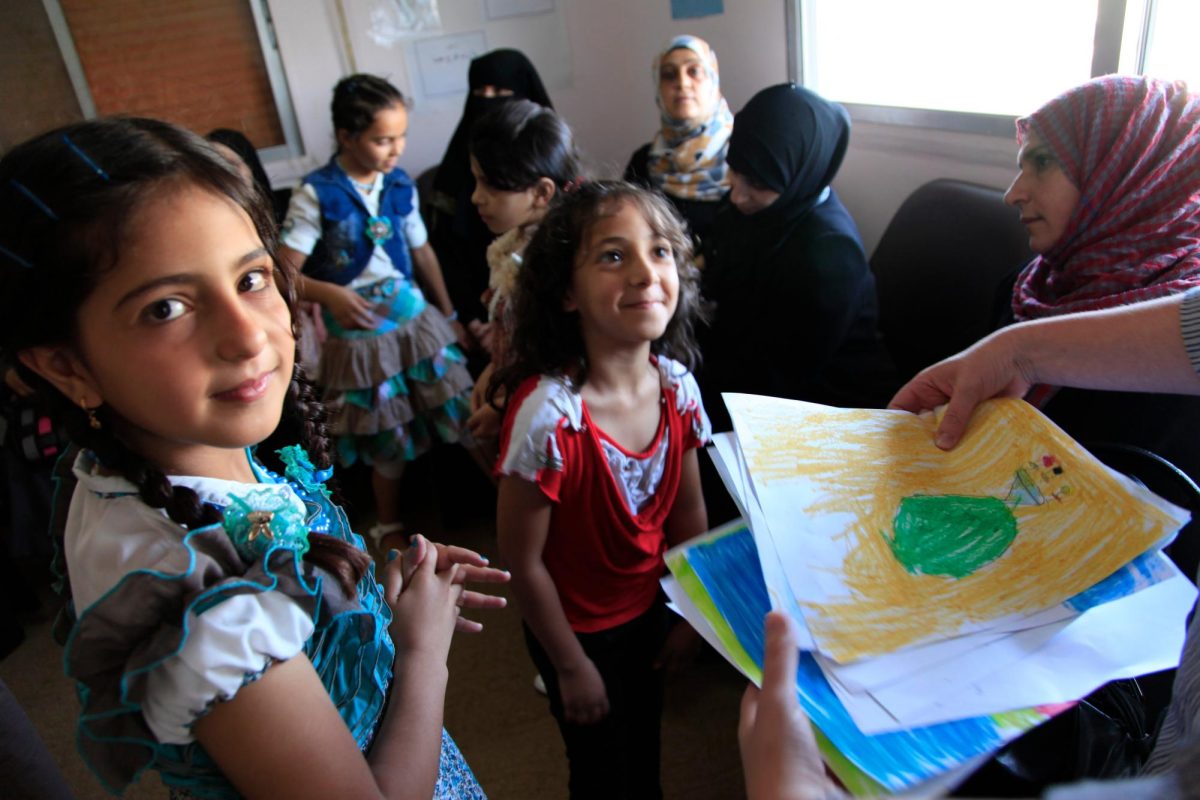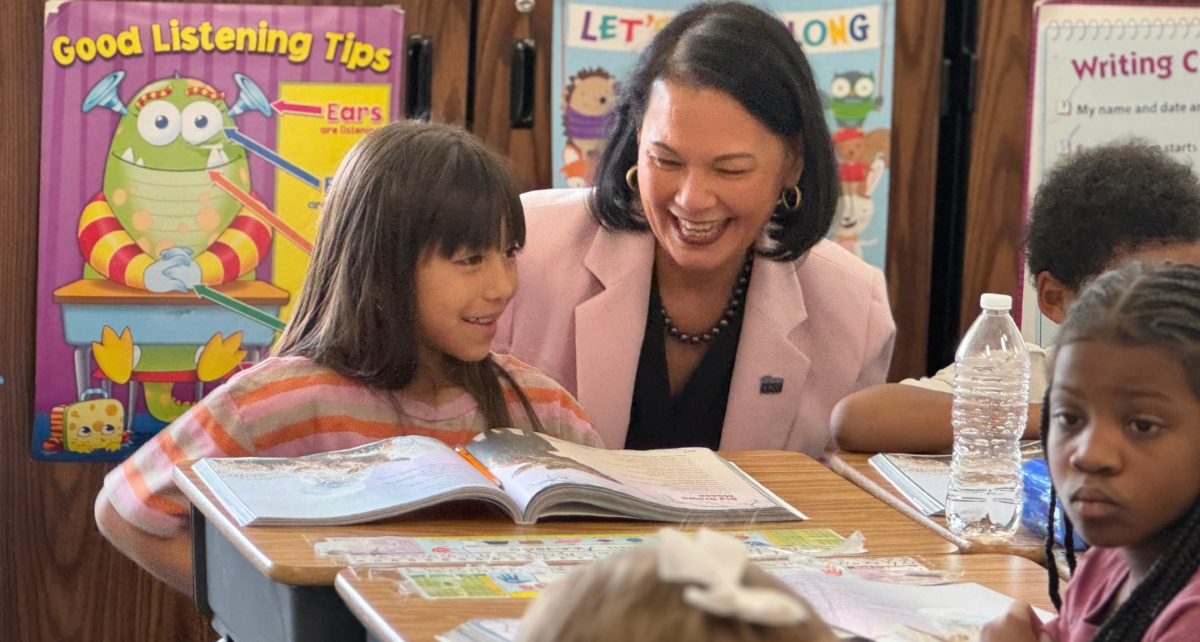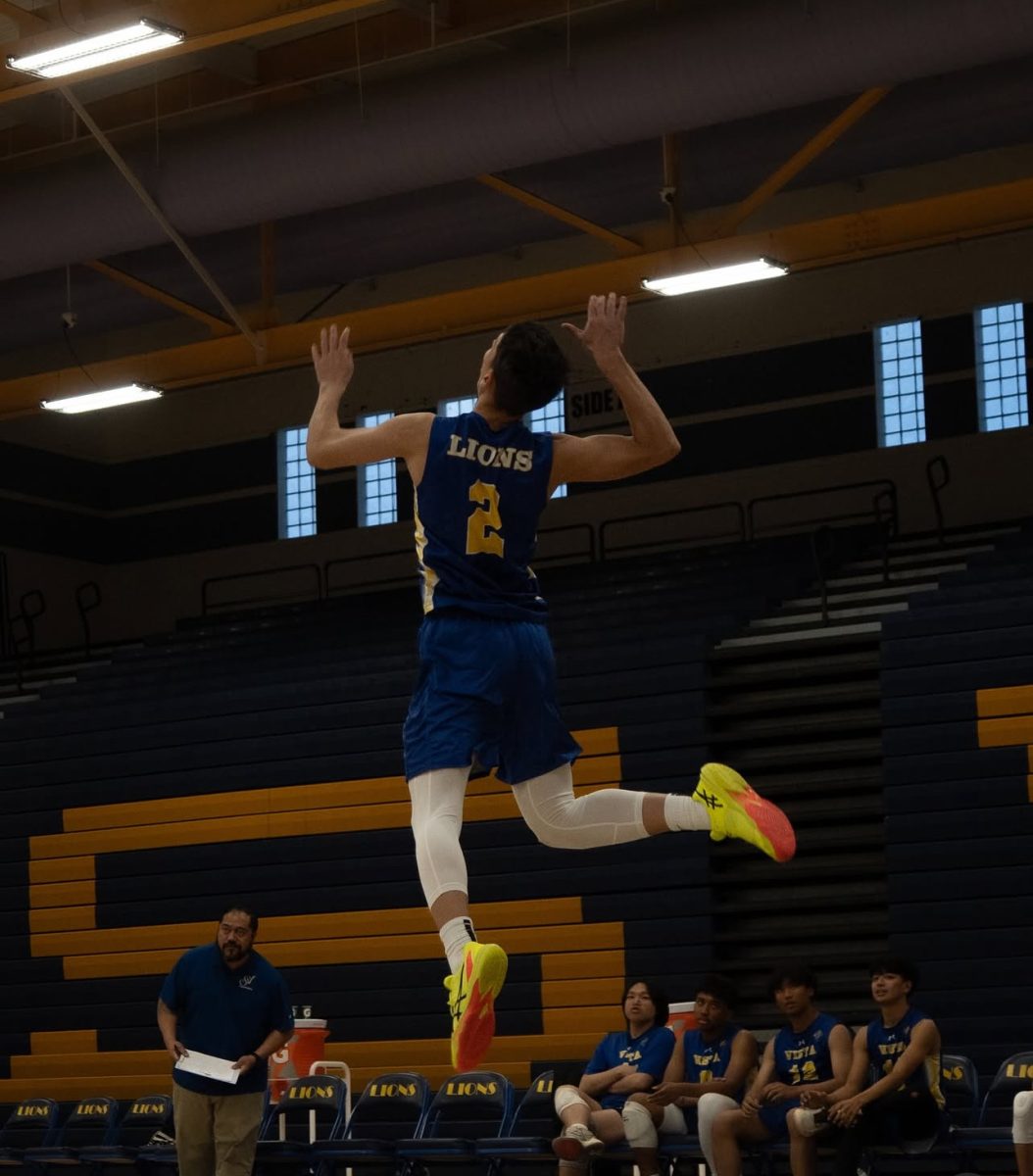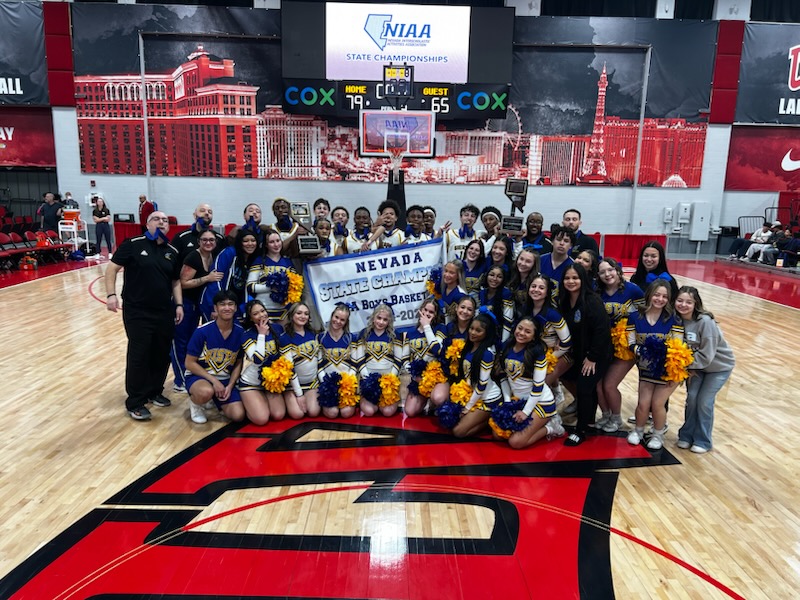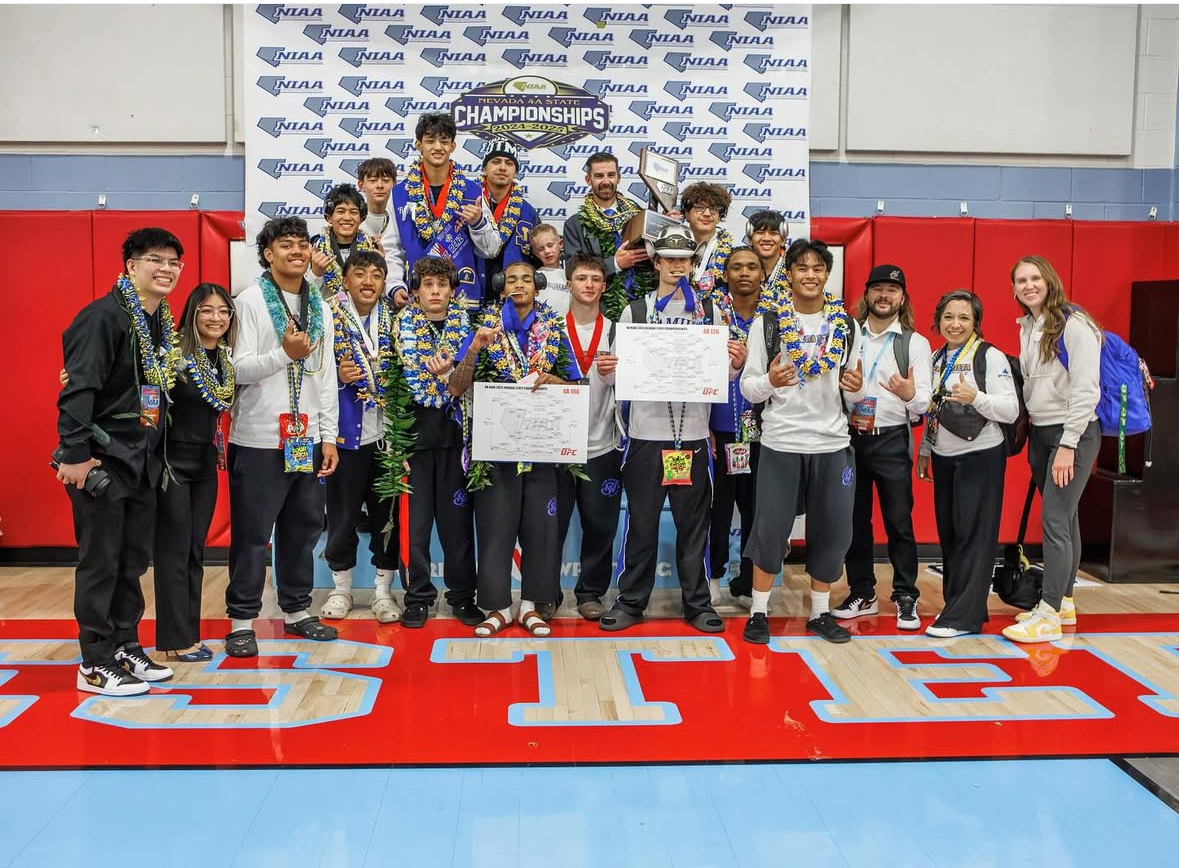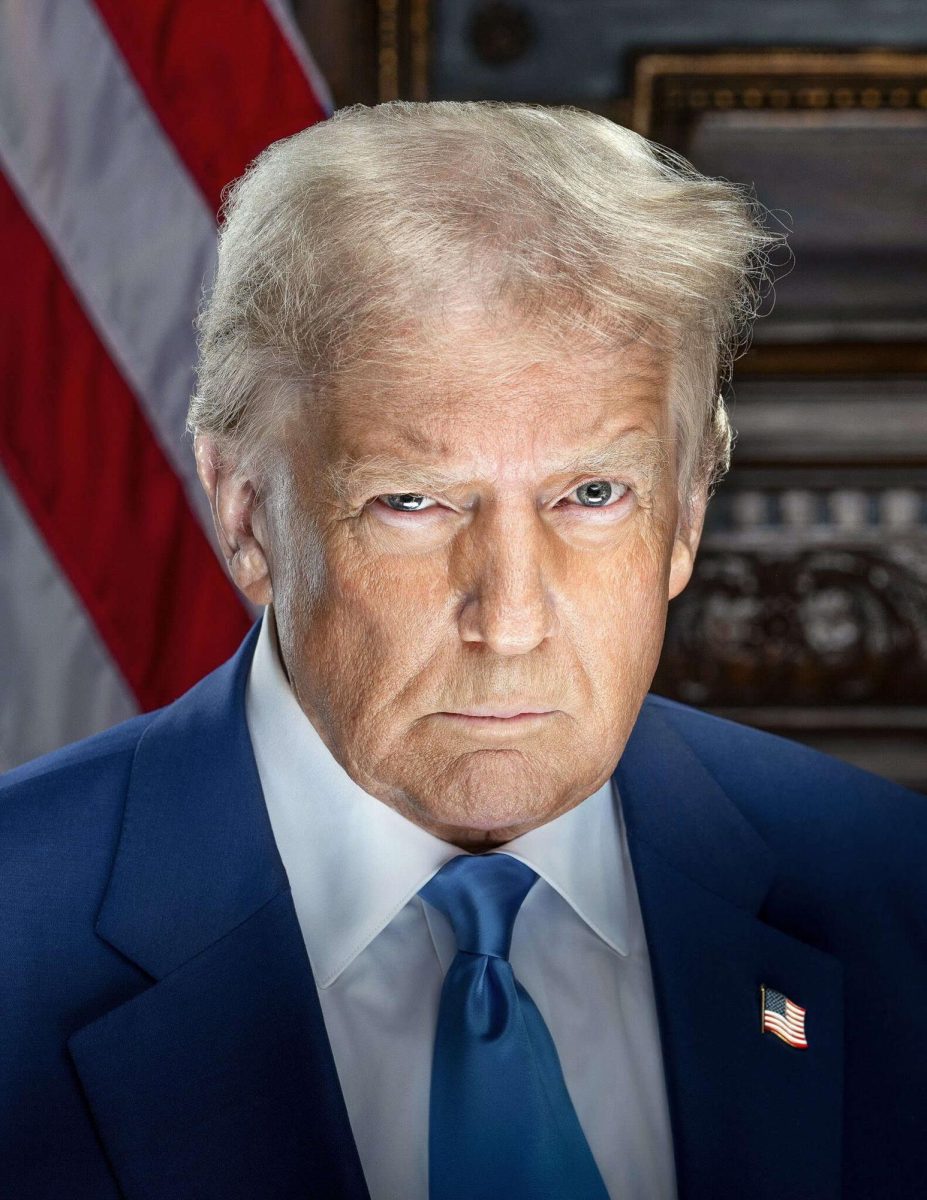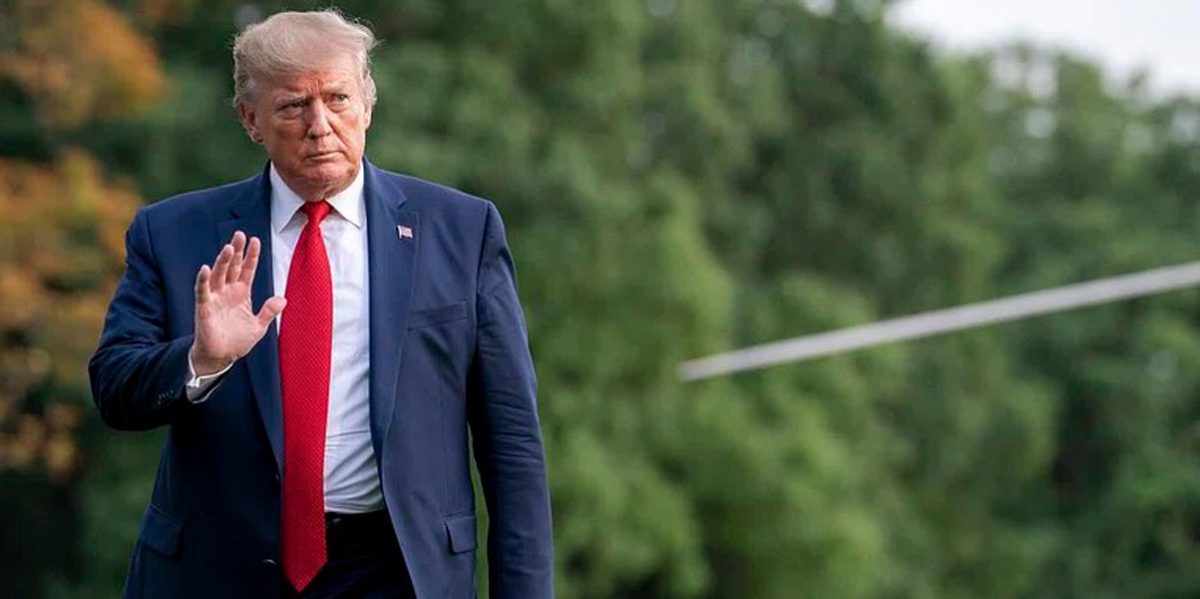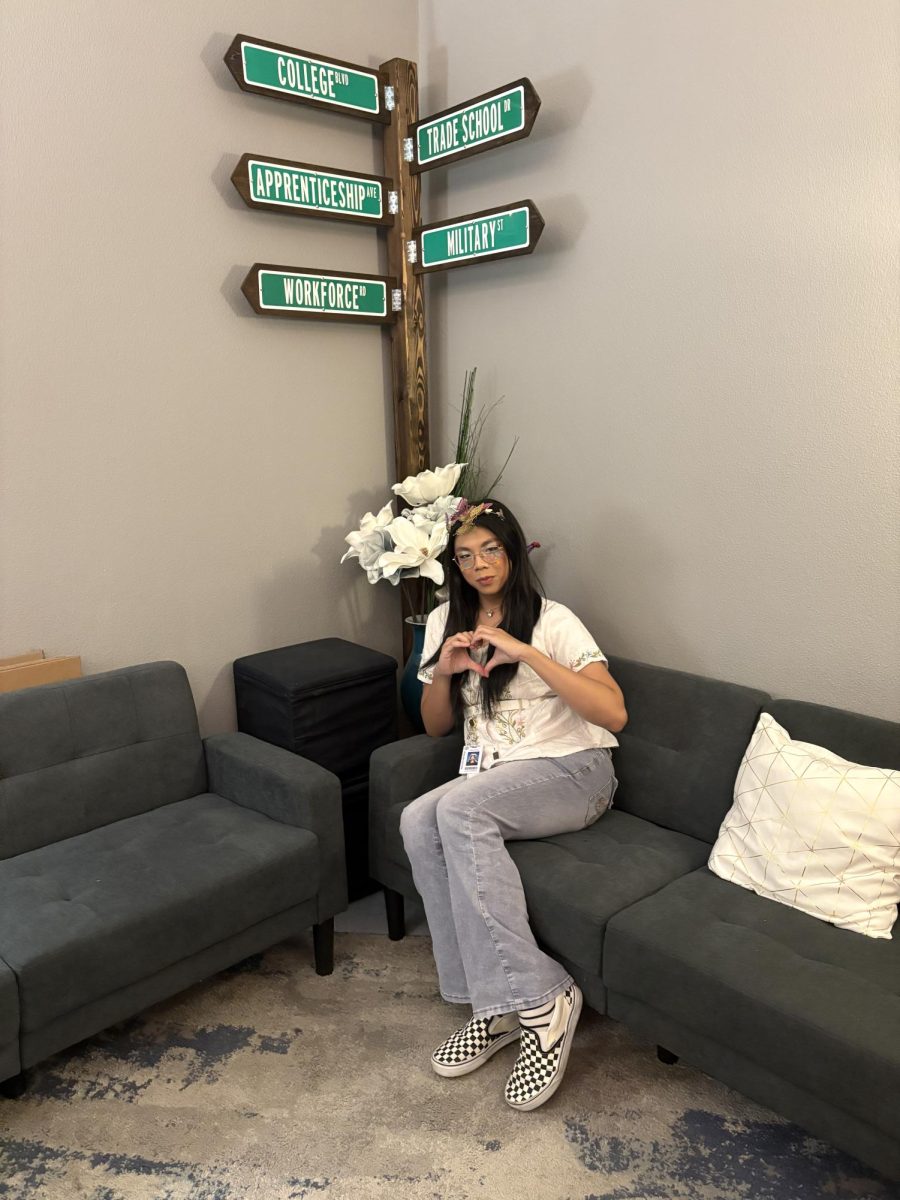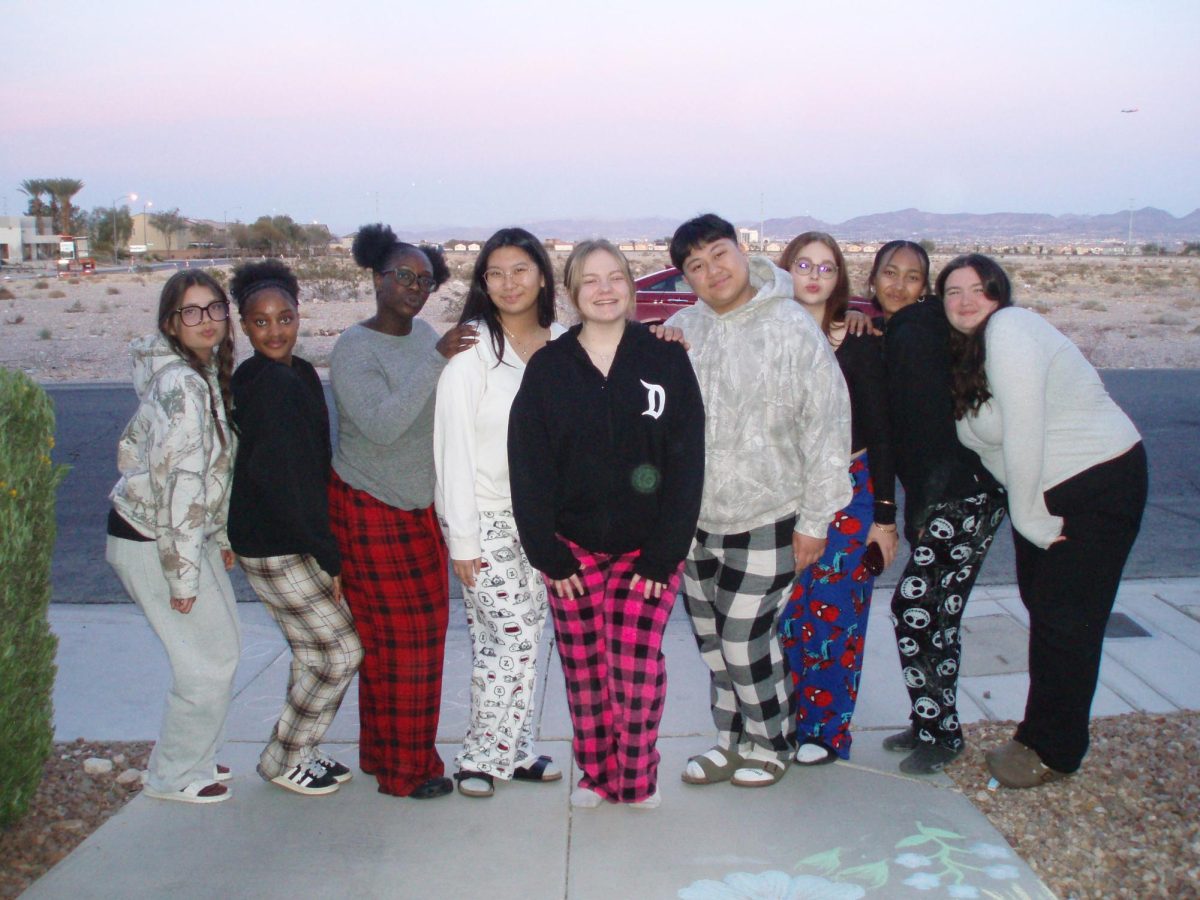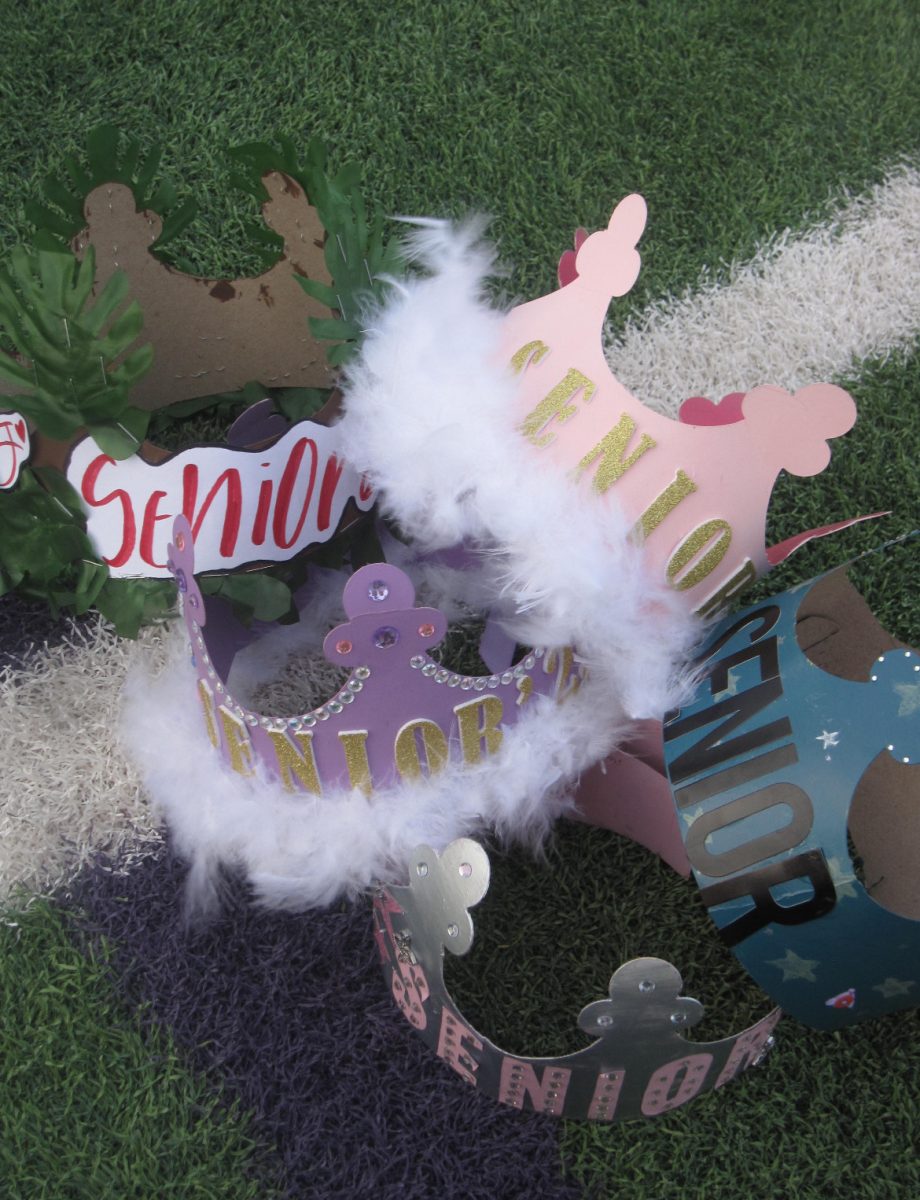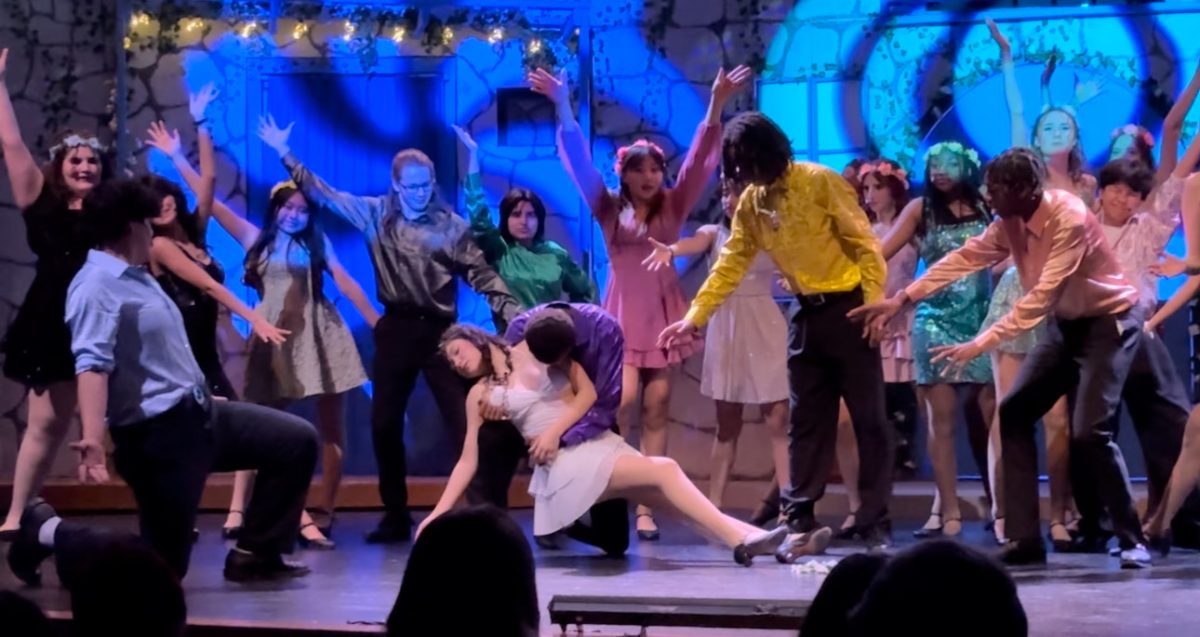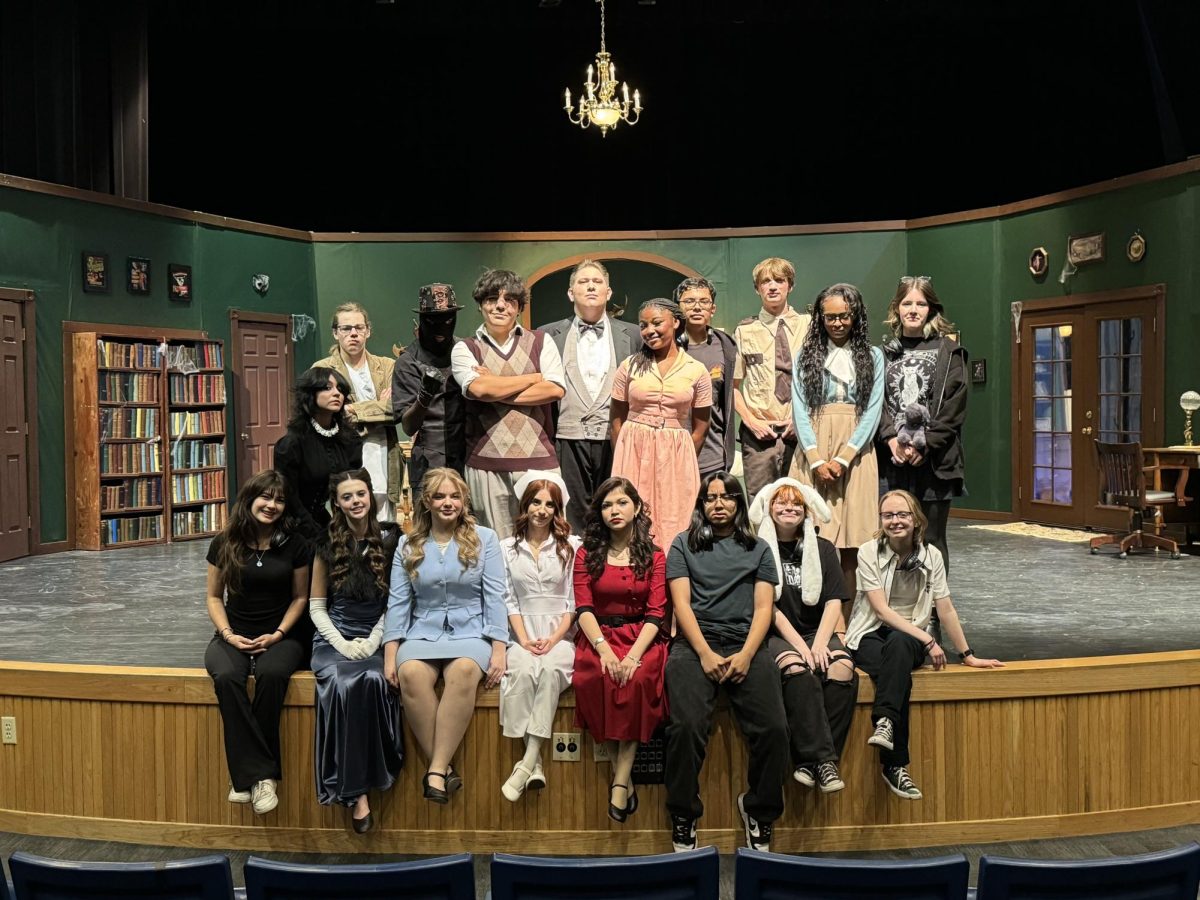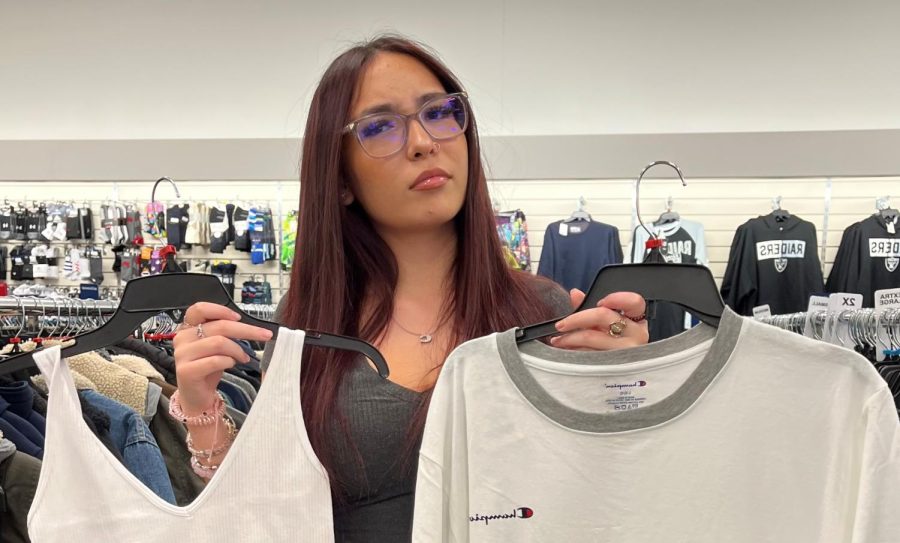Dress code regulations
Revealing a Bias
October 3, 2022
Going back to school shopping has been quite difficult due to dress code changes that have been pretty challenging to follow. Simply visiting the juniors department of any store will reveal limitless choices; however, the majority of them will result in a dress code violation. Considering the limited options for fashion-forward females, not only can I speak for myself, but many other female students, when I state that the dress code unfairly targets female students.
Entering the new 2021-2022 school year at Sierra Vista High School, some students were shocked by changes and enforcement to the dress code. To make matters worse, students have to wear the blue PE shirts once caught violating the dress code. Savannah Navarrete, 9th grader, shares, “They give you a pe shirt and a ticket and they keep your personal shirt with them, which you then switch out at the end of the day, the pe shirt smelled really bad.”
The Clark County School District regulation 5131 states that the dress code must be enforced to prevent disruption of education from taking place. As quoted in The New Dresscode Crackdown Julia Ventura, Assistant Principal, says, “The administrative team felt that consistency was important for the students, especially after COVID, being back for one full school year already.”
Some students share that they feel like the dress code changes and enforcement has been mostly targeted towards girls. Students feel that many of the dress code rules do not apply to boys other than the no sagging and no hats rule. The dress code seems to sexualize what female students wear. For example, the policy includes no midriff, no straps shorter than three inches wide, and shorts and skirts must be fingertip length. The belief is that this type of clothing might cause distraction in the classroom. The policy seems to focus on something that many students (both female and male) agree upon that neither causes a distraction or disruption. Lola Carbonetti, 12th grader, shares,“I feel like the dress code has changed a lot, I don’t really like it. I think the new changes are unnecessary,”Carbonetti adds, “For the most part, I feel like the dress code does target girls the most. Small straps and slight midriffs are not a distraction in my eyes. I think that most of the rules don’t apply to boys.”
Students feel that the boys get away with the dress code the most. Akyra Cotto, 11th grader says, “Boys get more leeway when it comes to dresscode,” “They seem to be more lenient with boys and they don’t get in trouble as much as the girls do. It’s very unfair,” she shares.
Savannah Navarrete, 9th grader, also adds, “A guy with a tank top was allowed to keep his shirt and change into another shirt, whereas when I got dress-coded, they did not let me change into my jacket. It wasn’t fair.” Treatment seems to differ when it comes to dress coding the boys, compared to the girls. For example, many boys wearing tank tops or shorts that are shorter than fingertip length, have been seen around the school without being told anything about it; whereas, girls seem to get put on the spotlight when wearing the same clothing.
Lola Carbonetti, 12th grader says, “I’ve seen many guys get away with breaking the dress code, whereas girls get in trouble for the slightest skin or shoulders showing.” Even the consequences and attention seem unfairly aimed towards the girls.
While some dress code policies are necessary, the potential sexualization aimed at female students and inequity between male and female clothing options demonstrates a need for a change in policy.


